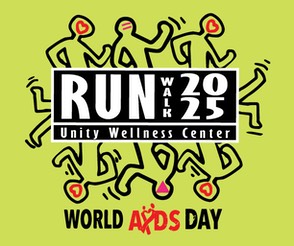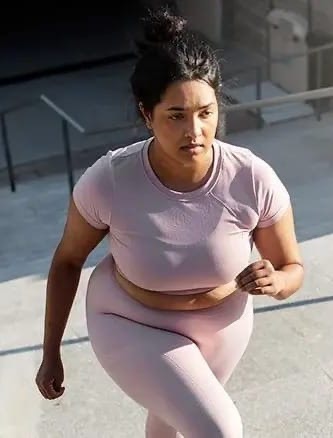AORTA News: October 27th, 2025
A great turnout last Saturday!
Watch our club members stride through the miles and enjoy water stop conversation - everything we love about AORTA: friendship, encouragement, and miles shared together. These Saturday runs keep us motivated and connected - no matter the pace, everyone’s part of the team!

Upcoming Race This Coming Sunday!

Beat Bama Food Drive 5K
- When: Sunday, November 02, 2025
- Time: 2:00 PM (1-Mile), 2:30 PM (5K)
- Where: Cater Lawn, Auburn University
- Fee: $40 (5K), $20 (1-Mile)
- Description: The Beat Bama Run Fest is a charity color run benefiting the Food Bank of East Alabama. It offers a 5K race and a one-mile fun run for participants of varying fitness levels, encouraging community involvement by collecting non-perishable food donations. Pre-registration is encouraged to save on fees, and the event includes water stops, refreshments, and children's entertainment, making it a well-rounded experience focused on fitness, community engagement, and philanthropy for participants of all ages.
Upcoming Local Races
Walk For Life + 5K
- When: Saturday, November 08, 2025
- Time: 8:00 AM (1-Mile), 8:30 AM (5K)
- Where: Opelika Sportsplex
- Fee: $30 (5K), $10 (1M), $0 for 12 & Under (1M)
- Description: Looking for an easy and fun way to make a difference for LIFE? Join Women's Hope Medical Clinic & Hope Adoptions as a runner or fundraising walker for our upcoming Walk For Life + 5K! By getting sponsors to support your walk, you can help reach our fundraising goal and play a significant role in cultivating a culture of life.

Unity Wellness Center AIDS Day Run/Walk
- When: Saturday, November 15, 2025
- Time: 8:00 AM (1-Mile), 8:30 PM (5K)
- Where: Town Creek Park, Auburn, AL
- Fee: $5 (1-Mile), $5 (5K) (t-shirt optional fee)
- Description: Join us for the 8th Annual Unity Wellness Center World AIDS Day Run/Walk, featuring a $5 fee for both the 5K and 1-mile events (with an option to add a shirt for $20), and veterans can run for free (see website for details). Age group awards will be given, and there will be a raffle and refreshments for the whole family. The 1-mile walk starts at 8:00 am (untimed), and the 5K timed race begins at 8:30 am. This event commemorates World AIDS Day, a global day of unity against HIV, and supports Unity Wellness Center's vital services, including HIV testing, counseling, medical care, case management, and prevention education.
Moore’s Mill Turkey Trot
- When: Thursday, November 27th, 202t
- Time: 8:00 AM
- Where: Moore’s Mill Club, Auburn, AL
- Fee: $35 includes t-shirt
(Register by Nov 18th for guarenteed t-shirt)
- Description: The annual Moore’s Mill Club Turkey Trot is something NOT to be missed! Taking place Thanksgiving Day morning, it has become a fun family tradition for many. Runners, joggers & walkers - this fun run is for EVERYONE!
- Last year we raised $27,300 for the Food Bank of East Alabama.
- $1 Donation Equals 7 Meals!

Auburn Toys for Tots 5K/10K and Fun Run
- When: Saturday, December 13, 2025
- Time: 8:00 (1-Mile), 8:30 AM (5K/10K)
- Where: Wrights Mill Road Elementary
- Fee: $20 (1-Mile), $30 (5K), $40 (10K)
- Description: Mark your calendars and start the holiday season in a festive mood with a 10K, 5K, or 1-Mile! All participants are asked to bring a new, unwrapped toy. to be distributed to children in need. This year, Toys for Tots donations are especially important. the weak economy has caused many to lose jobs, be furloughed, or be forced out of work for long periods of time. Families in these difficult situations desperately needed a little extra holiday cheer this holiday season. The Toys for Tots race will help bring people together during the holidays. All participants who register online by December 1st will receive a souvenir festive t-shirt!
Have Gently Worn Running Shoes?
Are your running shoes past their useful running life? Most are normally good for 300 to 500 miles but can still have a lot of “sole” left in them! If yours are ready for retirement, bring your gently used running shoes to Love2Run, our local running partner store, where they’ll collect them for a fantastic organization called “Sneakers4Good”, a social enterprise that ships them to developing nations for micro-entrepreneurs.

When you bring them, please check for the following:
1) Gently worn means they are clean in usable condition and have no holes.
2) Soles are intact and not too worn, cracked, or breaking apart.
3) Laces intact, in good condition, not frayed, and tied together.
Weekly Whimsy

8 Reasons Why Runners Don’t Lose Weight
Running State

** Summary of Article **
Many amateur runners—even those doing high mileage—may not lose weight (and in some cases gain) despite their efforts.
Why runners struggle to lose fat
Training-related mistakes
1. Excessive training volume
- Doing too much running (high mileage or high intensity) can raise cortisol levels, which interferes with fat-burning.
- For effective fat burning the article argues: longer low-intensity sessions (≥ 1 hour) are better for tapping fat as a fuel.
2. Adaptation to stress
- When runners keep repeating the same routine (e.g., 5 miles × 5-6 times/week at same pace) the body adapts. Progress stalls.
- To change body composition, you need new or increased stress: more duration, new stimuli, etc.
3. Lack of high-intensity training
- Runners may focus solely on long slow runs and neglect speed or interval work. The article describes how interval training not only helps performance but also helps fat loss via post-exercise energy expenditure.
4. Irregular training
- Inconsistent training (e.g., seasonal only, sporadic races) prevents the sustained stimulus needed for body-composition change.
Lifestyle-related factors
5. Insufficient recovery
- Lack of sleep (less than ~7-8 hours) leads to elevated hunger hormones (ghrelin up, leptin down), impaired insulin function, and increased fat storage.
6. High everyday stress
- Stress outside running (work, life, etc.) raises cortisol repeatedly. Elevated cortisol contributes to fat accumulation, especially visceral
7. Poor nutrition
- Overeating after runs, or undereating (which can trigger metabolic adaptation), prevent weight loss. The article explains that a mild calorie deficit (~10 %) is more sustainable, while large deficits or too low intake can reduce muscle mass and lower basal metabolic rate.
Health-related issues
8. Underlying health issues
- Hormonal imbalances (e.g., under-active thyroid), or conditions like metabolic syndrome (insulin resistance, visceral fat accumulation) can hamper fat loss despite correct training & nutrition.
Why belly fat (even for runners)
- Even runners with normal weight and muscular limbs may have a “protruding belly”. The article attributes that to visceral fat (often from chronic cortisol elevation) and sometimes poor posture (e.g., anterior pelvic tilt) giving the appearance of a belly.
- Suggested fixes: reduce stress, improve sleep, focus on posture/core (especially transverse abdominis) and adopt a full-body training & nutrition approach.
Tips & take-aways for runners wanting to lose fat
Main actionable strategies:
- Tailor your training plan individually rather than copying blindly.
- Employ periodization: vary intensity, volume, phases in training to keep stimulus fresh.
- Maintain consistency (train regularly) rather than sporadic sessions.
- Ensure sufficient sleep (7-8+ hours) and good sleep quality to support recovery and fat loss.
- Minimize everyday stress and its metabolic consequences.
- Watch nutrition carefully: keep a modest calorie deficit, ensure muscle mass maintenance, avoid over-eating after long runs, and manage total daily movement (not just training).
- Move beyond just running: increase general activity (walking, non-exercise movement) to boost total daily energy expenditure. Running State Newsletter
Link to Running State article: https://tinyurl.com/346xmnay

Quote of the Week
Slow or Fast,
A Mile is a Mile.
Anonymous
Video of the Week
Eat Like This to Feel Better Running (6:55)
Running can take a toll on your body, but proper nutrition can help you recover faster and perform better. In this video, we explore the best foods and nutrients for runners to consume post-workout (and timing). From protein to carbs, we'll break down the science behind recovery nutrition and give you practical tips for incorporating these foods into your diet.
** AORTA provides this informational video to its members as a courtesy and does not endorse any particular product, process, or service.
Ongoing Events
RunGo For Turn-By-Turn Directions!
RunGo provides turn-by-turn navigation allowing you to just enjoy your runs without having to think about looking for street names and when you may have to turn next. Other great features include, audio cues with your running stats, split updates, the ability to share your runs via social media, and create new routes. Another great feature of the app is the ability to work offline. You can create and download your routes ahead of time, before your run so you don’t have to use data during your run.
Race Volunteers Needed!
As a runner, we know your time is valuable. But if you have a couple hours to spare, we could use your help for one of the upcoming AORTA supported or directed races! Assisting at a local race is a fun and rewarding experience. You are surrounded by health conscious individuals that, like you, are motivated fitness enthusiasts and appreciate the effort of volunteers.
Water Stop Volunteers Needed
Water stop signs and coolers are available at the following location: 1536 Professional Parkway, Auburn, AL. (Thank you Adahli Massey!). Coolers and signs can be picked up Monday-Thursday from 8AM-4PM and on Fridays from 8AM-12 noon. Items are in the room next to the back door. If you are unable to pick up supplies on these dates/times, e-mail clemster@aol.com to make alternative arrangements (we deliver!).
Forward any comments to the webmaster










